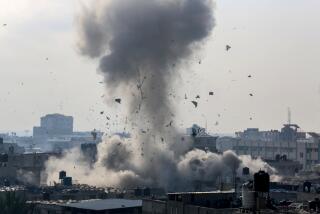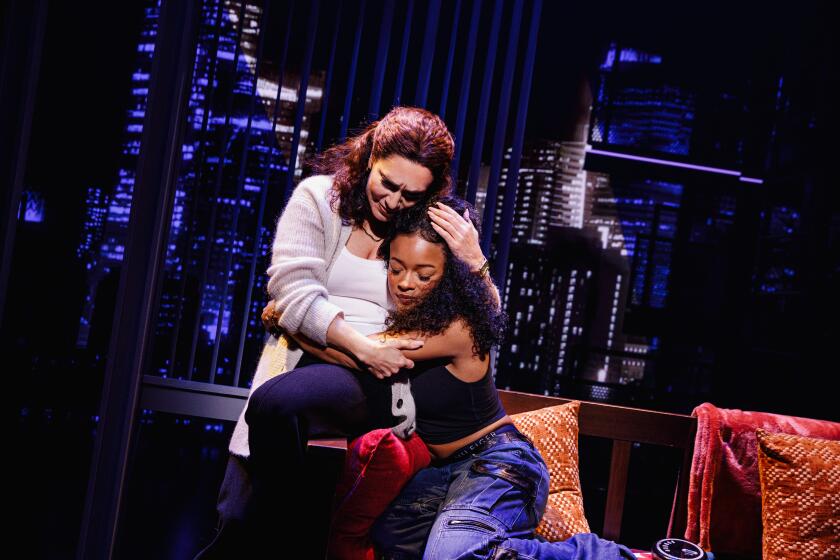Revolutionary Masters Taken out of Storage by <i> Perestroika</i>
For decades, the Russian revolutionary masters were condemned to storage vaults of Soviet museums for not toeing the line of Stalinist art.
Perestroika has allowed them to re-emerge in the plush lakeside Villa Favorita amid the priceless art collection of Switzerland’s wealthiest citizen, Baron Heinrich von Thyssen-Bornemisza. Perestroika, or restructuring, is the term used to describe Soviet leader Mikhail S. Gorbachev’s policies of economic and social reforms.
Thyssen’s own art collection comprises 1,400 priceless paintings ranging from medieval masters to American modern art, plus 600 sculptures and other works. Published estimates of his fortune range from $700 million to $2.8 billion.
The special exhibition, on loan from three Soviet museums, comprises 39 works of “revolutionary art” by Vassily Kandinsky, Kasimir Malevich, Mikhail Larionov and other avant-gardists, most of whom became “non-persons” under Joseph Stalin.
The works represent what became known as the “Great Experiment” in Russian art between 1910 and 1930, influenced by Pablo Picasso and other Westerners as well as Russian traditions.
Most of the works date back to before the Bolshevik revolution and before all big names went into exile.
“Composition VI” is a huge (78-by-120-inch) canvas by Kandinsky, dated 1913. The Lugano show features seven other works by him; Thyssen’s own collection comprises 10.
Kandinsky, a pioneer of abstract art, died in Neuilly-sur-Seine, France, in 1944. Thirty-six years later, his widow, Nina, was the victim of a robbery-murder that was never solved.
Larionov and his wife, Natalia Goncharova, also died in French exile. They married in 1955 after 45 years of companionship and are represented with four works each. They include her “Peasants Picking Apples” of 1911, influenced by folk art, and his “Rayonist Landscape of 1912,” a result of experiments with rayonism that aimed to portray the light emanating from objects.
Nine exhibits are by Malevich, the father of what he named “suprematism” because he felt that supremacy should be given to perception, divorced from any particular object.
Among them is one variant of his monochromatic “Black Square” of 1913, which stirred a sensation in the world of art and which he called a “zero form.” It is shown together with a “Black Circle” and a “Black Cross.” A commentary in the exhibition catalogue said, “It is very unlikely that (these) Suprematist compositions . . . will ever be completely deciphered,” a view some visitors may share.
Thyssen said at the opening that it took several years of negotiations before Soviet authorities gave the go-ahead for the loan. Facilitating things was Raisa Gorbachev, the wife of the Soviet leader, whom Thyssen met during one of his frequent trips to the Soviet Union.
The choice of the exhibits was a difficult undertaking, he said. “There are books, but there is no complete list, and often I had to scout the storage rooms.”
Thyssen said that as a “liberal” he welcomed perestroika and the resulting opening up in Russian art.
“Things are being straightened out now,” he said. “But it cannot be done from one day to the other. It must take its time.”
The show, which will run until Oct. 2, is part of the fourth exchange organized by the Thyssen family foundation and the Soviet Ministry of Culture since 1983. It is the first of these comprising modern Russian art.
Thyssen praised what he termed “an exemplary collaboration” with his Soviet partners despite occasional unspecified “difficulties.”
“When we started, some people asked me why I was sending our treasures to Russia; they warned me they would be never returned. But they came back in perfect shape. In fact, the paintings received a better treatment there than in some Western countries,” he said.
Popular interest in the Soviet exhibitions from his collections has been incredibly strong.
“The people are starved for what comes from the West,” he said. To help satisfy such hunger, the foundation is giving away several glossy catalogues that are printed in the West.
This year’s show from the Thyssen collections opened June 16 in Leningrad’s State Russian Museum and will move to Moscow in August. It features 40 modern masters and includes an early work by the American Jackson Pollock.
However, as in Lugano, Russian revolutionaries are represented, too: Kandinsky, Larionov and Goncharova, coming home for the first time since the artists sought creative freedom in the West.
More to Read
Start your day right
Sign up for Essential California for news, features and recommendations from the L.A. Times and beyond in your inbox six days a week.
You may occasionally receive promotional content from the Los Angeles Times.






